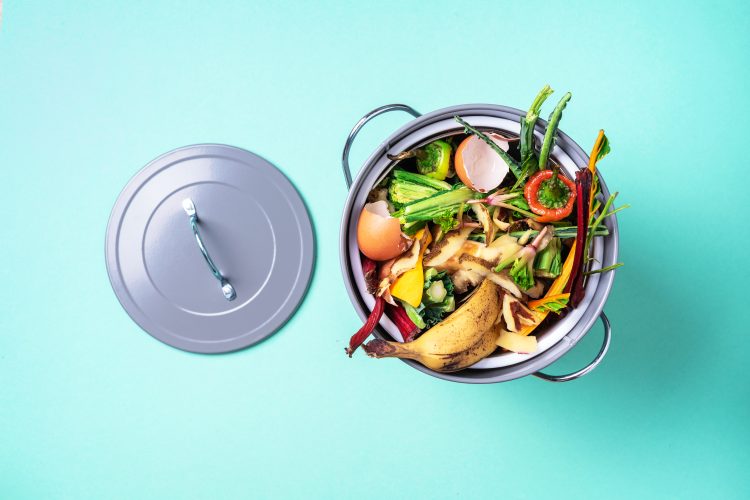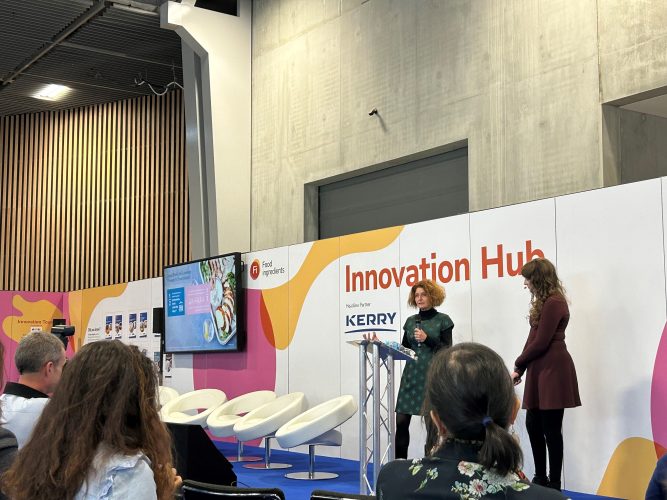Food Waste: Is it time to go back to the chalkboard?
- Like
- Digg
- Del
- Tumblr
- VKontakte
- Buffer
- Love This
- Odnoklassniki
- Meneame
- Blogger
- Amazon
- Yahoo Mail
- Gmail
- AOL
- Newsvine
- HackerNews
- Evernote
- MySpace
- Mail.ru
- Viadeo
- Line
- Comments
- Yummly
- SMS
- Viber
- Telegram
- Subscribe
- Skype
- Facebook Messenger
- Kakao
- LiveJournal
- Yammer
- Edgar
- Fintel
- Mix
- Instapaper
- Copy Link
Posted: 9 December 2022 | Joshua Minchin (New Food) | No comments yet
New Food’s Joshua Minchin brings you analysis from Kerry’s case study at Food Ingredients Europe in Paris, where education is the message of the day.


You all know the stats. Food waste would be the third largest emitter if it were a country, 30-40 percent of food in the US is wasted, so on and so forth. That’s not the lesson that Kerry wants to teach you (or indeed consumers). In their case study at Food Ingredients Europe 2022 in Paris’ stunning (albeit humongous) Porte de Versailles, Emma Cahill (Global Marketing Director) and Dr Sabina Cairoli (Business Development Manager), spoke about the gains Kerry have made when it comes to food waste through innovative solutions. Perhaps more importantly, they explained why consumer education is where food waste reduction starts and ends.
Technology gets you far
Some food waste is easy to identify – the family member scraping uneaten vegetables from a dinner plate into the bin (this bears no resemblance to any personal experiences of this writer). However, other types are hidden behind factory walls and complex supply chains.
Perhaps the most demonstrable example of food waste reduction further up the supply chain was offered by Cahill, who pointed to a sticky issue almost all of us will have faced at some point. When baking, no matter how much you try or how much flour you sprinkle, dough always gets stuck to the bowl, board, or other utensils. That mild annoyance in your kitchen at home becomes quite a large wastage when applied at scale to a commercial bakery. Cahill explained that by using an enzyme, dough can now be created that does not stick as much.
Another example, this time involving beverages, included using a natural ingredient to reduce the time spent in tunnel pasteurisation processes, reducing production time by 50 percent. Less time on the production line means (if you’ll pardon the pun) fewer bottlenecks and in turn less food waste and longer shelf lives.


Emma Cahill and Dr Sabina Cairoli delivering their lecture at FiE 2022
But only so far
The above are fantastic case studies of how the industry can work together to reduce waste before food even gets to the consumer. This is extremely valuable work and should not be downplayed, but it’s once we get to the consumer that the problems mount.
Overall, consumers are keen to reduce food waste. As Cahill attested, the majority surveyed by Kerry want to do all they can to limit the amount of nutrition that goes in the bin. “They feel shame” Cahill pointed out – a feeling many will relate to when being forced to discard uneaten food.
What’s the problem then? Consumers are hungry for change, we have the technology to deliver it, play on, surely? Well, as ever, things just are not that simple.
Shelf life of course plays a massive role when it comes to food waste. It dictates when consumers, buy food and when they throw it away. There have been huge strides made recently to extend the shelf life of foods, but there is a ceiling on this progress and it lies with the consumer, as Cairoli explained. If, for example, we could ensure that a product was safe from Listeria for 15 days, but the product began to lose its colour, texture, or generally look unfit for consumption after 10, then the shelf life for a consumer is still 10 days. The shelf life is dictated by microbial resistance or presentation, whichever is lower. Ultimately, it doesn’t matter how safe a pack of ground beef is if it’s started turning grey/brown.
This becomes particularly important when we continue to tell consumers to trust their senses. There has been a move away (rightly or wrongly) from best before dates on certain products – and it looks like that trend will continue and be applied to more foods, not less.
If consumers respond how the industry thinks (and it hopes) they will, then all the gains made to improve shelf life will be made redundant without further education, because they are invisible. It could be that ground beef that is beginning to discolour is perfectly safe to eat for another few days because of new technology, but traditionally-held ideas on what safe food looks, smells, and tastes like will influence decision making. Cahill explained that the majority of food education is delivered by care-givers (mothers, fathers, grandparents etc), who could very well be passing down outdated knowledge.
Another issue comes long-held ideas about what’s healthy and what’s not. Many consumers (this one included) might be a touch suspicious of bread that’s still good to eat after two weeks. The same might go for ground beef, seafood, or any other product.


2022’s edition of Food Ingredients Europe took place in the impressive Expo Porte de Versailles
Rewiring consumer mindsets
All the above has highlighted is that consumers have very rooted attitudes as to what constitutes safe food, established over decades and passed down from generation to generation. As technology improves and we are able to extend shelf lives of food and beverages further and further, it will be that now outdated knowledge that holds us back. That knowledge is sometimes innate and sometimes based on experience (either yours or somebody in the past), ie I once ate ham that smelled like this and got sick.
The food industry is going to have to reeducate consumers at the same rate that technology progresses. It’s a fine line between reducing food waste and encouraging consumers to eat potentially unsafe food – and the food and beverage industry should always prioritise consumer safety (as it always does). But as we develop new ways of keeping food for longer, we must see return on that investment out there in the cupboards and refrigerators of the world. That might mean improved labelling strategies, or public information campaigns perhaps.
Either way, it needs to happen soon. At the start of their ‘presentation, the two Kerry representatives revealed that at the current rate, we’d need three planets’ worth of resources to feed the 10 billion people expected on the Earth by 2050. As Cahill said, “the time is now and the opportunity is ours”.
Related topics
Food Safety, Food Waste, retail, Sustainability, The consumer









